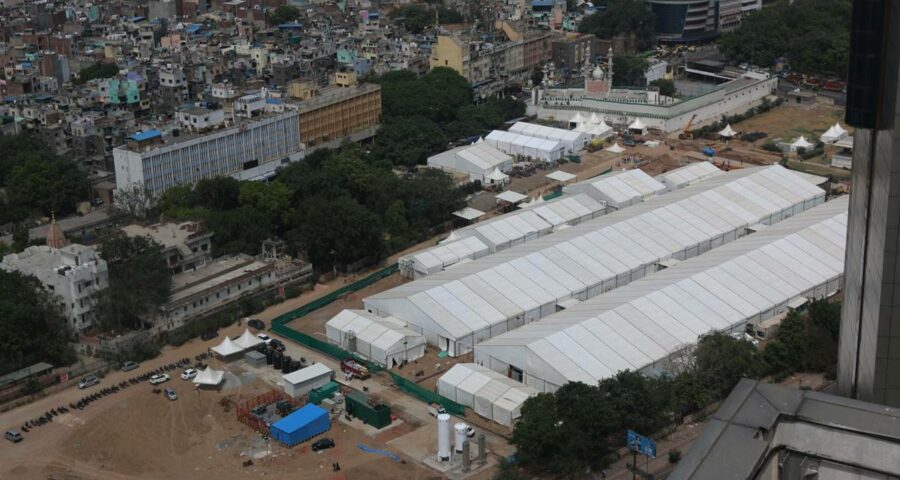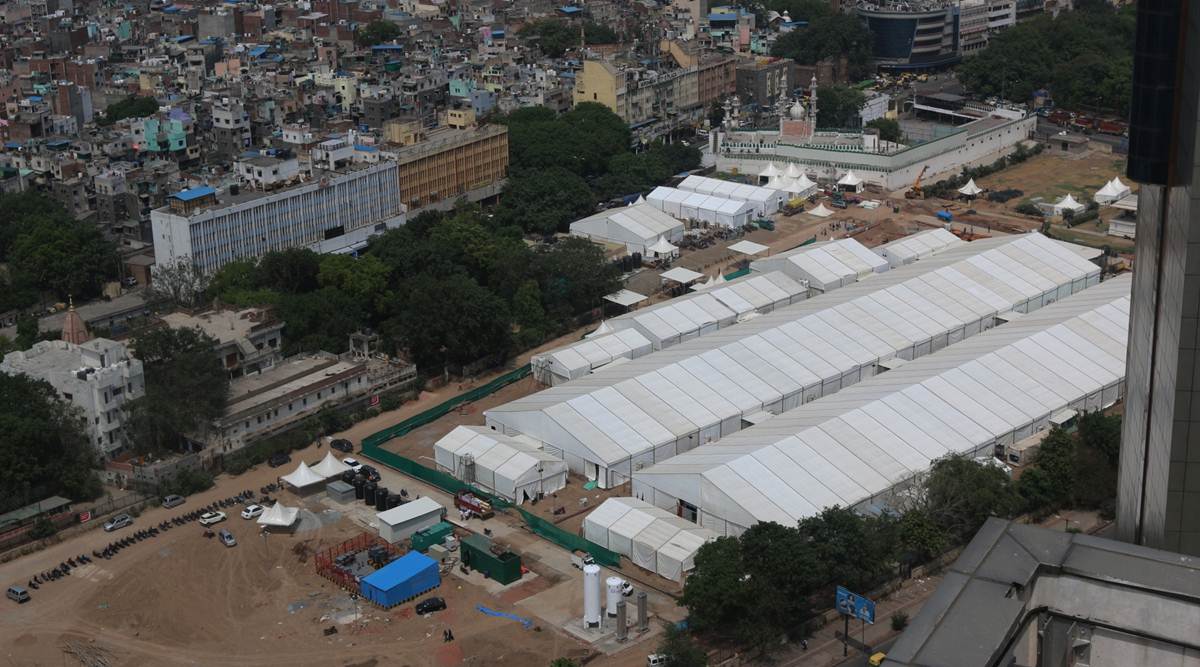Delhi's positivity rate has been below 20 per cent over the past week and dropped to 14 per cent Thursday when 10,489 cases were recorded. This has also led to a reduction in demand for hospital beds: out of 23,423 earmarked for Covid patients, over 5,000 are available
AFTER WEEKS of a bitter face-off with the Centre over the shortage of oxygen for Covid treatment during the second wave, and with at least 23 deaths reported from hospitals due to supplies running out, the Delhi government said the situation has improved to the extent that requirement has dipped from 700 metric tonnes per day to 582 metric tonnes.
In a webcast Thursday, Delhi’s Deputy Chief Minister Manish Sisodia said that his government has now asked the Centre to divert extra supplies to other states in need.
“Today as per new calculations based on bed occupancy and number of admissions in hospitals, we have found that Delhi now needs 582 metric tonnes oxygen (per day). Today, as a responsible government, we have written to the Central government saying we need 582 metric tonnes instead of 700 metric tonnes oxygen, and the extra oxygen we are receiving…should be given to other states, which need it more,” he said.
Delhi’s positivity rate has been below 20 per cent over the past week and dropped to 14 per cent Thursday when 10,489 cases were recorded. This has also led to a reduction in demand for hospital beds: out of 23,423 earmarked for Covid patients, over 5,000 are available.
Between May 1 and May 11, however, Delhi got more than 700 MT oxygen only on May 5. Two days earlier, the supply hit a low of 434 MT.
At one point, the situation was so dire that 21 patients at Jaipur Golden Hospital and 12 at Batra Hospital died as oxygen reserves were depleted. Many hospitals were posting pleas for liquid medical oxygen and cylinders on social media for patients who were on high-flow support and ventilators.
Even a week ago, numerous SOS calls from hospitals about oxygen running out were being made on an hourly basis. On May 4 alone, 49 such calls were made to Delhi government officers.
“In Delhi, around 15 days back, Covid cases were rising like a flood. Positivity rate had also increased to 35 per cent. Around 80,000-1,00,000 tests were being conducted every day, and thousands of patients were being admitted on a daily basis. Now, positivity rate has reduced to 14 per cent and daily cases have reduced to 10,400,” Sisodia said.
Setting up PSA oxygen generation plants across hospitals, most of them over the past week, has helped reduce demand, he said.
“When there was a huge demand for oxygen, we had calculated that we would be needing 700 metric tonne oxygen (per day) keeping in mind the number of cases in hospitals, bed occupancy, etc… We received 700 metric tonne only on one day but because of the support of the Centre, Supreme Court and Delhi High Court, Delhi started getting sufficient oxygen supply,” he said.
Sisodia said this led to a fall in SOS calls, and in the last 24-48 hours, they had barely received one call from any hospital.
Asked about the shortage of vaccines in the capital, he said: “I have already said that exporting 6.5 crore vaccines, without keeping in mind the need for it to be administered to citizens of this country, has led to this shortage. But I am hopeful that the government will increase vaccine production manifold in collaboration with companies here, and also bring in more vaccines which have been approved in foreign countries.”
Source: Read Full Article



